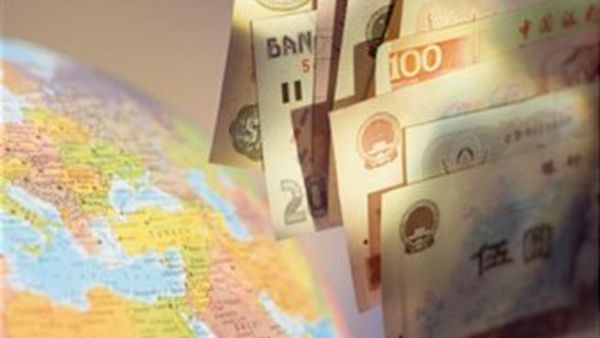One area that has received considerable attention in recent years is the liberalisation of key logistical trade practices. Dr. Ashraf Mahate, Head of Export Market Intelligence, Dubai Exports, and Vice Chair of the Economic Policy Committee, Dubai Economic Department, discusses the various elements involved.
The importance of the SME sector cannot be understated in any country, least of all in the UAE where they account for 98.5% of all firms. SMEs by their virtue have the potential of being the engine of economic growth. This is one reason why many governments around the world have focused their attention on the sector. Initiatives such as the Sub-contracting Partnership Exchange (SPX), a project developed by UNIDO, which links SMEs with global firms looking for sub-contractors to re-shaping the foreign trade policy and trade liberalisation, are leading the way.
Individual initiatives such as SPX have assisted the SME sector it is trade liberalisation that stands to make significant impact on the sector. There is no single specific economic policy that can describe trade liberalisation, but in reality it includes a wide variety of actions by the government.
Some of the trade liberation actions that have been carried out by various countries include: macroeconomic stabilisation policies, import duty and tax reforms, liberalising global capital flows, implementing legal changes, such as allowing non-nationals to own agency licences, as well as administrative and political reforms.
The broad nature of trade liberalisation is largely due to the different manner in which protectionist policies are carried out by countries. In some cases these protectionist policies are the result of the historical development of a country, while in other cases they reflect the current economic situation of a nation.
The road to trade liberalisation has tended to take two different paths or strategic directions namely focusing on the price of the good or service through various policy changes, and second, implementing a system of administrative controls.
In the case of the former, where the focus is on the final price, governments have tended to implement policies which have sought to in the first instance remove exchange rate distortions, usually through floating the currency. This policy allows the market to largely determine the exchange rate and hence the price of the product is a more realistic reflection of the cost of production and the economic situation of the country.
Second, countries have sought to remove non-tariff barriers which are a whole system of import protection policies and replacing them with import tariffs. The key benefit of removing non-tariff barriers is that in most cases they are not transparent. In contrast a tariff is transparent and allows the firm to be able to calculate the cost and decide whether to pass it to the consumer. More importantly, if non-tariff barriers take the form of a quota, set a maximum quantity that can be imported into the country. For high demand products this naturally leads to an increase in the market price.
In recent years a number of countries have sought to homogenise tariff rates between partner-nations and to limit the categories of high tariff products. In some cases this has come about through regional pacts or treaties while in others through a free trade agreement. Another common government action, especially in many developing countries, has been to open the import process so that it is simpler and without the need for an import license. This naturally increases the level of competition between firms and tends to reduce the price of the product.
This policy also seeks to remove, or at least greatly reduce, the product categories where the state has a monopoly of import. On the other side of the trade cycle governments have also sought to eliminate export taxes so that it is free of governmental price distortions. An export tax effectively increases the price of the product and makes it uncompetitive in the global marketplace and thereby diverting it to the domestic market.
The second strategy of implementing an administrative system of trade policies has focused on maintaining the current tariffs rates but seeking to reduce their negative impact on exports with an import duty drawback system or export subsidies. This strategy allows the country to maintain the protective tariff system while ensuring that the export sector is competitive in global markets.
This strategy is a realisation that all export sectors rely on a certain level of imports and hence any restrictive tariff system will negatively impact their performance in global markets. Some countries, and this is typical of the UAE, have established free trade or export processing zones which go beyond simply seeking to liberalise trade, but create an area which is not subject to the normal rules and regulations of the nation.
Trade liberalisation offers SMEs an opportunity to not only survive but grow their business beyond the borders of their country. More importantly, the global marketplace allows SMEs to capitalise on economies of scale, which may not be possible if they simply focus on their domestic market. Therefore, there is little doubt that internationalisation is too good an opportunity for SMEs to ignore. However, one also needs to be aware that trade liberalisation is a two-way street, in that as the SMEs in one country seek to globalise their business, so do those in the partner country.
As such trade liberalisation has both a positive or negative impact on the SME sector. Some of these impacts include an increase of foreign competition due to the reduction or removal of import tariffs non-tariff barriers. The increased foreign competition will impact greatly on domestic firms who are uncompetitive. Of course these firms can be pro-active and seek to change their business processes through eliminating unnecessary cost components and employing more innovative technologies, as well as modern management practices. SMEs that do not change their business practices to reflect the more competitive environment will tend to experience a negative impact due to trade liberalisation.
Although trade liberalisation provides SMEs an opportunity to grow their business some commentators argue that they lack the necessary resources to effectively capitalise on the opportunities. In essence SMEs, due to their size, tend to be uncompetitive in the global marketplace. However, the lack of resources implies that they may not be able to invest in modern technology or upgrading the skills of their employees. As a result trade liberalisation tends to benefit larger firms who have the resources to exploit economies of scale and invest in research and development activities as well as have considerable marketing budgets.
Lack of resources need not be a disadvantage and SMEs can use this to their advantage through forming global partnerships or alliances. SMEs need to understand that trade liberalisation allows them to benefit from lower input costs, which can enhance their price competitiveness thereby allowing them to compete more effectively in export markets. However, for them to effectively do this they need to understand their business process and identify aspects which can be carried out more cheaply overseas and where they can add value.
More serious for the SMEs is the fact that trade liberalisation can actually reduce the availability of inputs. Trade liberalisation can eliminate export restrictions and if the overseas price is higher than the domestic one then the producers will simply sell their output abroad. This can lead to a shortage of inputs in the domestic market and thereby push domestic firms out of business. Of course the domestic firms can agree to pay a price equal to the foreign one for their inputs but they may not have the same level of cost structure to compete as far as the final price is concerned. For example, anecdotal evidence suggests that Chinese firms have paid over the market price in order to obtain key raw materials with the full knowledge that their labour costs are greatly below global levels.
Therefore, if they over-pay for raw materials they can make up the difference against their competitors through lower wages. The strategy of over paying for raw materials is simply to ensure that they have a consistent supply.
As countries move away from a trade restrictive environment to a more liberal one there will certainly be an impact on the SME sector. The impact of trade liberalisation is far too important for the SME sector to ignore as there will be both positive as well as negative effects.
SMEs need to move beyond their borders and take their goods or services into overseas markets. If they do not then not only will their market potential be limited, but they will face increased competition from foreign firms in their own backyard. What is certain is that the SME sector needs to be pro-active in order to examine their business and identify strategies that will allow them to capitalise on the huge global potential.








